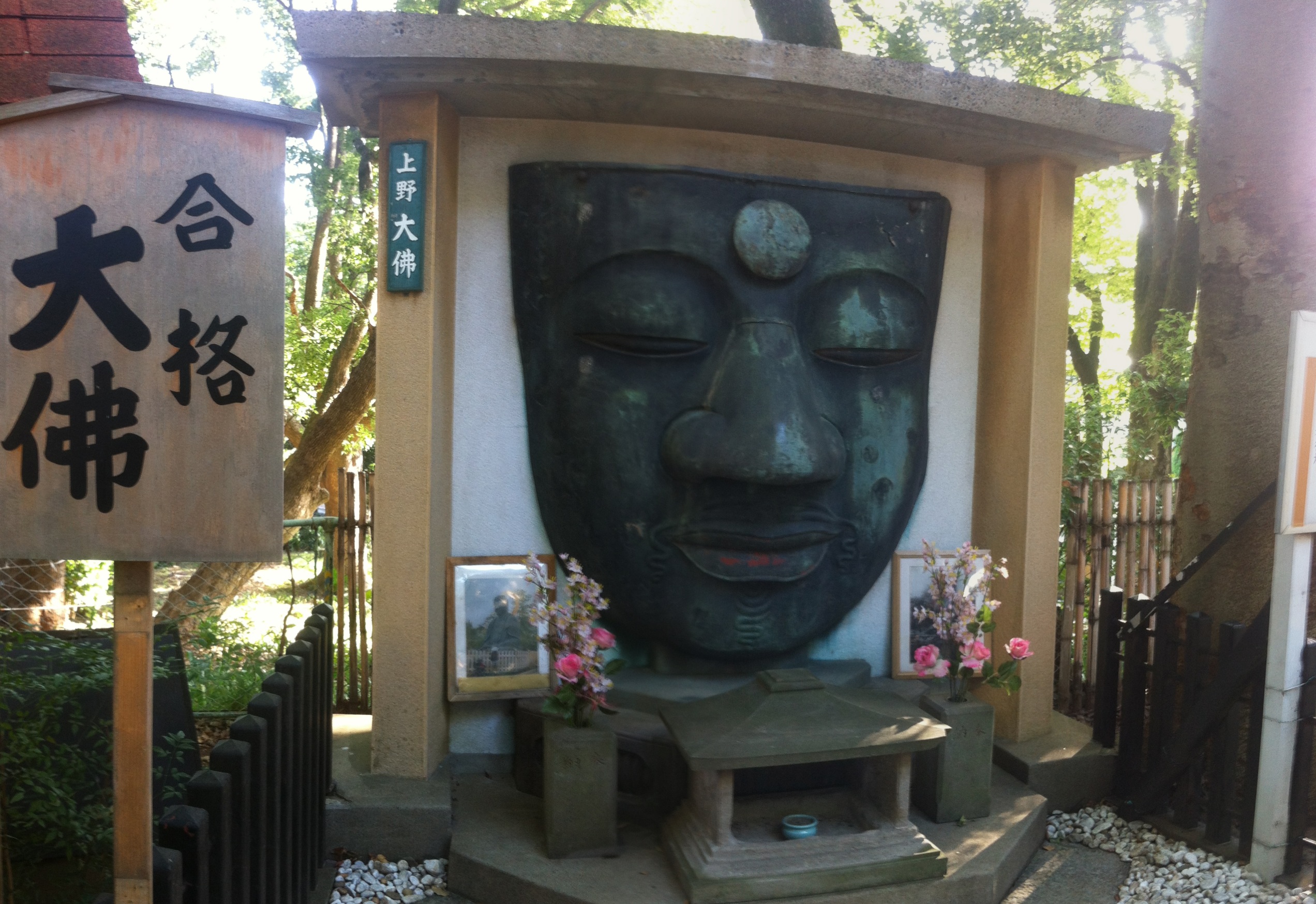Ueno Daibutsu on:
[Wikipedia]
[Google]
[Amazon]
 was an
was an
File:Ueno Daibutsuden.JPG, Former Daibutsuden, early
 was an
was an Edo-period
The or is the period between 1603 and 1867 in the history of Japan, when Japan was under the rule of the Tokugawa shogunate and the country's 300 regional '' daimyo''. Emerging from the chaos of the Sengoku period, the Edo period was characteri ...
giant seated statue of Shaka Nyorai
Siddhartha Gautama, most commonly referred to as the Buddha, was a wandering ascetic and religious teacher who lived in South Asia during the 6th or 5th century BCE and founded Buddhism.
According to Buddhist tradition, he was born in Lu ...
in what is now Ueno Park, Tokyo
Tokyo (; ja, 東京, , ), officially the Tokyo Metropolis ( ja, 東京都, label=none, ), is the capital and List of cities in Japan, largest city of Japan. Formerly known as Edo, its metropolitan area () is the most populous in the world, ...
, Japan. Of bronze and dating to 1631, it was restored after earthquake damage in 1640, a fire in 1841, and again after the 1855 Edo earthquake. Heavily damaged during the 1923 Great Kantō earthquake, when the head was toppled, much of its bulk was melted down for reuse during the Pacific War. In 1972 the face, stored in Kan'ei-ji
(also spelled Kan'eiji or Kaneiji) is a Tendai Buddhism, Buddhist temple in Tokyo, Japan, founded in 1625 during the Kan'ei era by Tenkai, in an attempt to emulate the powerful religious center Enryaku-ji, in Kyoto. The main object of worship is ...
, was put on display in its former location.
Meiji period
The is an era of Japanese history that extended from October 23, 1868 to July 30, 1912.
The Meiji era was the first half of the Empire of Japan, when the Japanese people moved from being an isolated feudal society at risk of colonization ...
File:Ueno Daibutsu in Taisho era.JPG, Ueno Daibutsu in the Taishō period, before the 1923 Great Kantō earthquake
File:UenoDaibutsu - headless - 1923.jpg, The head fallen off the Daibutsu, after the 1923 earthquake.
See also
*Daibutsu
or 'giant Buddha' is the Japanese term, often used informally, for large statues of Buddha. The oldest is that at Asuka-dera (609) and the best-known is that at Tōdai-ji in Nara (752). Tōdai-ji's daibutsu is a part of the UNESCO World Heritag ...
* Japanese sculpture
Sculpture in Japan began with the clay figure. Towards the end of the long Neolithic Jōmon period, some pottery vessels were "flame-rimmed" with extravagant extensions to the rim that can only be called sculptural, and very stylized pottery dog ...
* List of National Treasures of Japan (sculptures)
In the mid-6th century, the introduction of Buddhism from Korea (Baekje) to Japan resulted in a revival of Japanese sculpture. Buddhist monks, artisans and scholars settled around the capital in Yamato Province (present day Nara Prefecture) and pa ...
* Conservation Techniques for Cultural Properties In 1975 the Japanese government added a new chapter to the Law for the Protection of Cultural Properties (1950) to provide for "traditional techniques or craftsmanship that are indispensable to the preservation of cultural property and for which pre ...
References
{{Reflist Colossal Buddha statues in Japan Bronze Buddha statues Japanese sculpture 1631 works Ueno Park